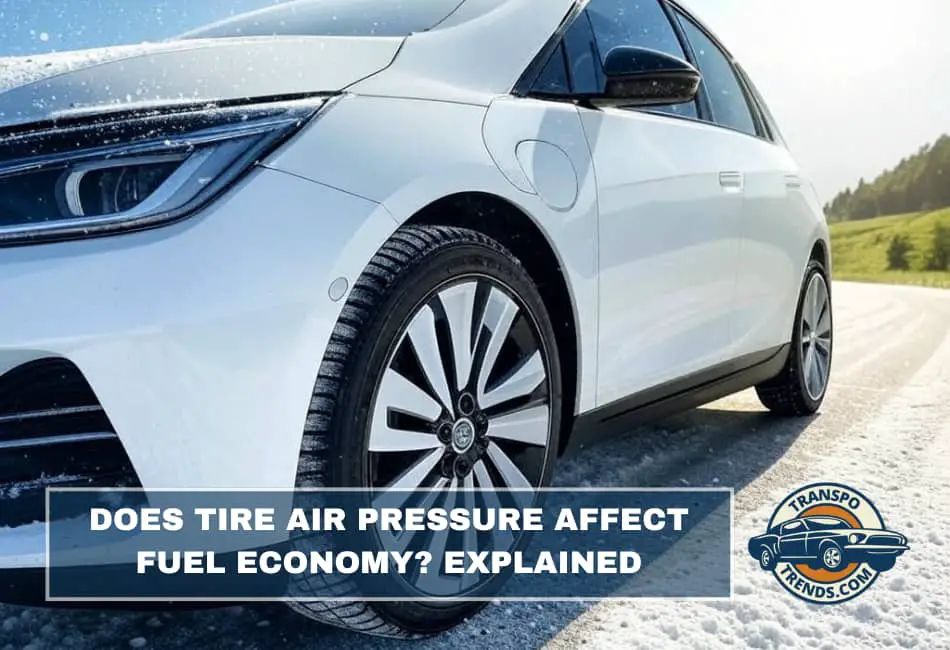Maintaining the correct tire air pressure is one of the simplest yet most overlooked ways to improve your vehicle’s fuel efficiency. Underinflated tires create more rolling resistance, forcing your engine to work harder and burn more fuel.
Over time, this can significantly impact your fuel economy and increase wear on your tires. Whether you’re driving a compact car, SUV, or electric vehicle, optimizing your tire pressure can help you save money at the pump and extend the life of your tires.
In this guide, we’ll break down 10 practical tips to help you maintain proper tire pressure and maximize your fuel efficiency.
1. Check Your Tire Pressure Monthly
Start simple: grab a tire gauge (they’re cheap!) and check your pressure once a month. Your car’s ideal PSI (pounds per square inch) is usually on a sticker inside the driver’s door or in the manual.
Low pressure means more rubber dragging on the road, guzzling extra fuel. Keeping it spot-on can boost fuel efficiency by up to 3%. That’s like getting a free coffee every few fill-ups—small wins add up!
2. Inflate Tires to the Recommended PSI
Don’t guess—overinflating is as bad as underinflating. Stick to the manufacturer’s PSI, not the max number on the tire sidewall (that’s a rookie move).
Proper inflation reduces rolling resistance, which is just a fancy way of saying your engine doesn’t have to work as hard. You’ll save a few bucks at the pump and keep your tires from wearing out fast. Win-win!
3. Watch Out for Temperature Swings
Here’s a fun fact: for every 10°F drop in temperature, your tire pressure dips about 1 PSI. In 2025, with wild weather swings, that’s a big deal.
Cold tires mean lower pressure and worse gas mileage. Check them more often in winter or after a heatwave—your wallet will thank you when fuel costs don’t sneak up like a ninja.
4. Use a Quality Tire Gauge
Ditch the gas station’s beat-up gauge—it’s probably as accurate as a fortune cookie. Invest in a digital tire gauge (under $20) for a precise read.
Accurate pressure keeps your fuel economy humming and prevents uneven tire wear, saving you from pricey replacements. It’s like giving your car a mini spa day—practical and pampering.
5. Fill Up Tires When They’re Cold
Hot tires lie. After driving, heat builds up and boosts pressure readings, throwing you off. Check and inflate them cold—before you hit the road or after they’ve chilled for a few hours.
This ensures your PSI is on point, maximizing fuel efficiency. Plus, it’s an excuse to sip coffee while you wait—multitasking at its finest!
6. Avoid Overloading Your Car
Got a trunk full of camping gear or that “just in case” toolbox? Extra weight forces your tires to work harder, dropping pressure and fuel economy.
Keep it light when you can—every 100 pounds shaved off can bump efficiency by 1-2%. Less clutter, more cash for road trip snacks. Check your tire maintenance routine to stay ahead!
7. Inspect Tires for Leaks or Damage
A slow leak or a nail can bleed pressure, tanking your gas mileage before you notice. Give your tires a quick once-over monthly—look for cuts, bulges, or sneaky punctures.
Catching issues early saves fuel and avoids a roadside breakdown. Fun stat: 85% of tire issues are fixable if spotted soon—be the hero your car deserves!
8. Rotate Tires Regularly
Uneven wear from bad pressure habits messes with fuel efficiency—like running in mismatched shoes. Rotate your tires every 6,000-8,000 miles (check your manual for specifics).
Balanced tires roll smoother, sipping less gas and lasting longer. With repair costs spiking in 2025, this tip’s a budget-saver disguised as routine maintenance.
9. Consider Nitrogen Inflation (If You’re Fancy)
Some swear by nitrogen instead of regular air—racecar vibes, anyone? It leaks slower and handles temperature changes better, keeping pressure stable.
Does it really boost fuel economy? Maybe a smidge, but the real perk is less frequent top-offs. It’s pricier, so weigh the cost—your local shop can hook you up if you’re curious.
10. Upgrade to Low Rolling Resistance Tires
If your tires are bald or ancient, consider low rolling resistance models next time. They’re built to glide easier, cutting fuel use by 1-4%—perfect for 2025’s electric vehicle boom or gas-saving goals.
They cost a bit more upfront, but the long-term savings on fuel and replacements are worth it. Think of it as a tire glow-up with benefits!
Conclusion
So, does tire air pressure affect fuel economy? You bet it does! From monthly checks to smart inflation habits, these 10 tips prove that a little tire TLC goes a long way. In 2025, with inflation jacking up repair costs and new car tech making every mile count, keeping your tires dialed in is a no-brainer for everyday drivers. You’ll save gas, dodge breakdowns, and maybe even impress your car-obsessed buddy with your newfound wisdom. Ready to roll smarter? Pick one tip, try it this weekend, and watch the savings stack up. Share your favorite tip in the comments—I’d love to hear what works for you! Now, go give those tires some love—they’ve earned it.

